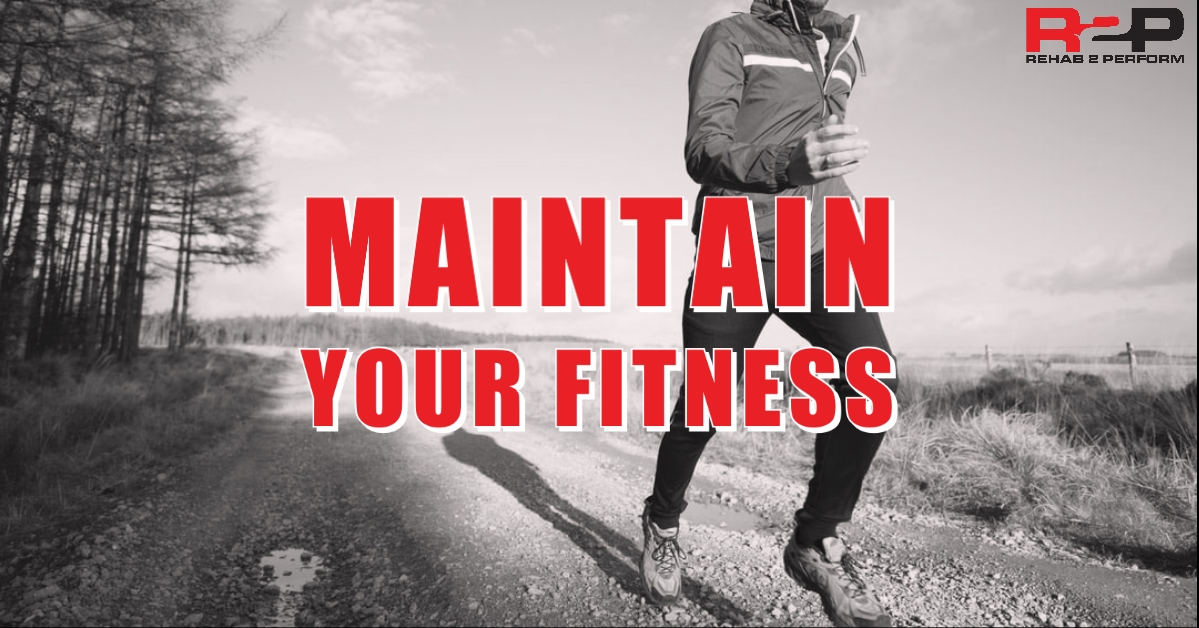Maintain Your Fitness From Home
While there are far more than 3 methods for improving your conditioning without the gym, cardiac output, explosive repeats, and tempo lifting are the best and easiest places to start.

Maintain Your Fitness from Home with these Three Conditioning Methods
via Joel Jamieson (www.8weeksout.com)
Method #1: Cardiac output
This is the simplest method of all. Cardiac output is incredibly easy to do without access to a gym, because you simply need to keep your heart rate at a moderate level (130 – 150 bpm, for most people) for 30+ minutes at a time.
Jogging/running is the most common way to do cardiac output without a gym, but you can also do basic calisthenics like jumping jacks, bodyweight squats, burpees, etc. For less than $20, you can get yourself a jump rope, which also works great and is a highly underrated conditioning tool.
To make this type of training less boring, you can do circuits of various exercises. Anywhere from 1-5 minutes per exercise typically works best.
Method #2: Explosive Repeat
Just like cardiac output, the explosive repeat method is perfect for gym-free training, because it doesn’t require anything other than bodyweight exercises. This method is also a bit higher intensity than cardiac output, and it’s designed to improve endurance within your muscles.
How to do it:
- Use cyclical exercises like jump squats, jump lunges, explosive push-ups, etc.
- Perform the exercise as explosively as possible for 8-10 seconds to start
- Rest for 60 seconds to start, reduce by 20 seconds each week.
- Actively rest between sets with jumping jacks or slow jogging
- Repeat for 10-12 sets to start. Add 1-2 sets per week, up to 20
Method 3: Tempo lifting
Even without the gym, there are ways to help maintain your strength while improving your conditioning at the same time. Tempo lifting is the best method for this, because you need very little resistance for it to work.
The key reason for this is the speed and cadence. Tempo lifting is slow: two seconds up, two seconds down. Don't pause at any part of the rep.
How to do it:
- Constant tempo 2-2-0 – no pause at any point
- Breath throughout the rep. Don’t hold your breathe
- 3-5 sets x 10-12 reps
- 40-60 seconds rest between sets
This slow speed and lack of any pause leads to constant tension and adds an additional load to your working muscles. The trick is choosing the right exercises.
For the upper body, simple bodyweight tempo push-ups are far more challenging than most people expect.
For pulling, you can use any sort of bar, or even a strong tree branch at the right height, for inverted rows. If you have any sort of resistance band, you can also add other tempo exercises like pull-aparts.
For the lower body, the easiest way to get the job done is with single-leg squats and lunges. If you have a training partner who you’re stuck in the house with, you can add manual resistance for leg curls and other hamstring exercises.
Putting the pieces together
While there are far more than 3 methods for improving your conditioning without the gym, cardiac output, explosive repeats, and tempo lifting are the best and easiest places to start.
When you build out your weekly plan, it should look something like this:
- 2-4 cardiac output workouts for 30-60+ minutes (time depending on fitness level)
- 1-2 total body workouts with explosive repeat method
- 1-2 total body workouts with tempo lifting
There are almost endless ways to organize these workouts, but here are some general guidelines to maximize their effectiveness:
- You can combine cardiac output with either explosive repeat or tempo lifting in the same workout.
- Do not combine explosive repeat and tempo lifting methods in a single workout.
- The "no pain, no gain" concept is BS. Consistency is more important than intensity. Getting in some conditioning work 5-6 days per week is far more effective than running yourself into the ground on any day.
- Start with lower volume and gradually add a little bit each week over the next 30 days. During stressful times, it’s easy to compromise your recovery. Don’t overdo it on Day One.
